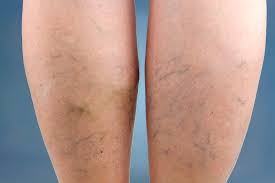Vein Therapy: Achieving Healthier, More Attractive Legs
Vein therapy has become an increasingly popular and effective solution for individuals suffering from various venous conditions. Whether it’s painful varicose veins, unsightly spider veins, or other venous disorders, vein therapy treatments can alleviate symptoms, improve circulation, and enhance the appearance of your legs. In this article, we’ll explore the various vein therapy options, their benefits, and how they can help you achieve healthier, more attractive legs.
The Importance of Vein Health
The veins in our legs play a crucial role in transporting blood back to the heart. When these veins become damaged or weak, blood can pool in the legs, leading to various venous conditions such as varicose veins, spider veins, and chronic venous insufficiency. These conditions can cause pain, swelling, and discomfort, impacting the quality of life and overall health.
Types of Vein Therapy
There are several types of vein therapy treatments available, catering to different venous conditions and individual preferences. Some of the most common treatments include:
Sclerotherapy: This minimally invasive procedure involves injecting a sclerosing agent into the affected veins, causing them to collapse and be absorbed by the body. Sclerotherapy is ideal for treating small to medium-sized spider veins and varicose veins.
Endovenous Laser Ablation (EVLA): EVLA is a minimally invasive treatment that uses laser energy to heat the interior walls of the affected veins, causing them to collapse and eventually be reabsorbed by the body. This treatment is effective for larger varicose veins and can be performed under local anesthesia.
Radiofrequency Ablation (RFA): Similar to EVLA, RFA utilizes radiofrequency energy to heat and collapse the affected veins. It is a minimally invasive treatment that can be used for both varicose veins and chronic venous insufficiency.
Venaseal™: Also known as vein glue, Venaseal™ is a non-thermal treatment that involves injecting a medical adhesive into the affected veins. The adhesive seals the veins shut, allowing the body to reabsorb them over time. This treatment is suitable for varicose veins and does not require anesthesia.
Microphlebectomy: This surgical procedure involves the removal of large varicose veins through tiny incisions in the skin. Microphlebectomy is often performed in conjunction with other vein treatments and is best suited for patients with large, bulging varicose veins.
Benefits of vein therapy
Vein therapy refers to a variety of medical treatments that are designed to improve the function and appearance of veins. The benefits of vein therapy can vary depending on the specific treatment, but here are some of the general benefits:
Improved circulation: One of the primary benefits of vein therapy is improved blood flow and circulation. This can help reduce symptoms such as pain, swelling, and fatigue.
Reduced risk of complications: Vein therapy can help reduce the risk of complications associated with vein conditions such as varicose veins and spider veins. These complications can include blood clots, skin ulcers, and deep vein thrombosis.
Improved appearance: Many vein therapies can improve the appearance of veins, which can help boost self-confidence and self-esteem. This is especially true for treatments like sclerotherapy, which can reduce the appearance of spider veins.
Faster recovery: Depending on the type of vein therapy, the recovery time can be relatively quick. This means that patients can return to their normal activities sooner, with minimal disruption to their daily routines.
Long-lasting results: Many vein therapies can provide long-lasting results, which means that patients can enjoy improved vein function and appearance for an extended period of time.
Overall, vein therapy can be a highly effective way to improve vein health and reduce the risk of complications associated with vein conditions. It is important to work with a qualified healthcare provider to determine the best treatment approach for your specific needs.











